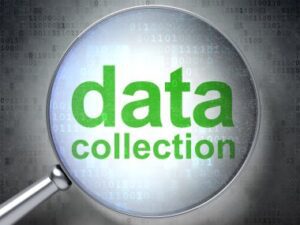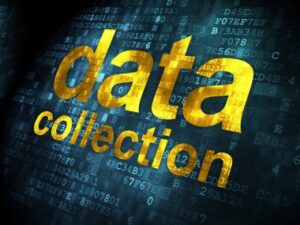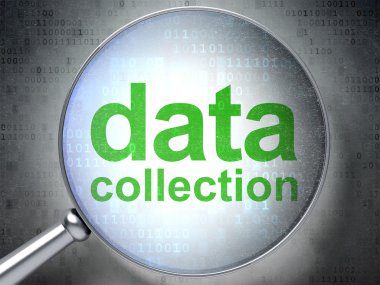What are the 5 best data collection methods in research with examples?

What are the 5 best data collection methods in research with examples? The data collection methods that the researcher chooses will depend on the research question posed. Some data collection methods include surveys, interviews, tests, physiological evaluations, observations, reviews of existing records, and biological samples.
What is quantitative data collection?
Quantitative data collection is the gathering of numeric data that puts consumer insights into a quantifiable context. It typically involves a large number of respondents – large enough to extract statistically reliable findings that can be extrapolated to a larger population.
The importance of quantitative data collection
Quantitative data collection can confirm or deny a brand’s hypothesis, guide product development, tailor marketing materials, and much more. It provides brands with reliable information to make decisions off of (i.e. 86% like lemon-lime flavor or just 12% are interested in a cinnamon-scented hand soap).
Compared to qualitative data collection, quantitative data allows for comparison between insights given higher base sizes which leads to the ability to have statistical significance. Brands can cut and analyze their dataset in a variety of ways, looking at their findings among different demographic groups, behavioral groups, and other ways of interest. It’s also generally easier and quicker to collect quantitative data than it is to gather qualitative feedback, making it an important data collection tool for brands that need quick, reliable, concrete insights.
In order to make justified business decisions from quantitative data, brands need to recruit a high-quality sample that’s reflective of their true target market (one that’s comprised of all ages/genders rather than an isolated group). For example, a study into usage and attitudes around orange juice might include consumers who buy and/or drink orange juice at a certain frequency or who buy a variety of orange juice brands from different outlets.
Data collection is the process of collecting and analyzing information on relevant variables in a predetermined, methodical way so that one can respond to specific research questions, test hypotheses, and assess results. Data collection can be either qualitative or quantitative.
The actual data collection process for quantitative findings is typically done using a quantitative online questionnaire that asks respondents yes/no questions, ranking scales, rating matrices, and other quantitative question types. With these results, researchers can generate data charts to summarize the quantitative findings and generate easily digestible key takeaways.
Data collection is the process of gathering and measuring information on variables of interest, in an established systematic fashion that enables one to answer stated research questions, test hypotheses, and evaluate outcomes. The data collection component of research is common to all fields of study including physical and social sciences, humanities, business, etc. While methods vary by discipline, the emphasis on ensuring accurate and honest collection remains the same.
The importance of ensuring accurate and appropriate data collection
Regardless of the field of study or preference for defining data (quantitative, qualitative), accurate data collection is essential to maintaining the integrity of research. Both the selection of appropriate data collection instruments (existing, modified, or newly developed) and clearly delineated instructions for their correct use reduce the likelihood of errors occurring.
Consequences from improperly collected data include
- inability to answer research questions accurately
- inability to repeat and validate the study
- distorted findings resulting in wasted resources
- misleading other researchers to pursue fruitless avenues of investigation
- compromising decisions for public policy
- causing harm to human participants and animal subjects
While the degree of impact from faulty data collection may vary by discipline and the nature of investigation, there is the potential to cause disproportionate harm when these research results are used to support public policy recommendations

Data is referred to all the collected measurements and observations that are used as a source of information. In general, there are three types of data:
- First-party data: Collected directly from your own organization’s staff and customers.
- Second-party data: Another company’s first-party data which is shared with your organization.
- Third-party data: The data you buy from other organizations that do not have a direct connection with customers.
The data you are gathering, regardless of its type, can be also categorized into quantitative data and qualitative data. Quantitative data is based on numbers, while qualitative data mainly concerns qualities or characteristics. It is true that for different cases you need to use different types, but you can use either type for many data collection methods.
Collecting Data For Research
There are several methods of data collection in research; we are going to dive a bit deeper into the most common methods. The first five data collection methods are primarily used for collecting quantitative data, and the second ones are used to collect qualitative data. However, we can use some methods for collecting both qualitative and quantitative data. Before going through the methods, let’s take a quick look at the table of Quantitative data vs. Qualitative data to review their differences.
Quantitative Data Collection Methods

What is quantitative data collection?
Quantitative data collection is the gathering of numeric data that puts consumer insights into a quantifiable context. It typically involves a large number of respondents – large enough to extract statistically reliable findings that can be extrapolated to a larger population.
The actual data collection process for quantitative findings is typically done using a quantitative online questionnaire that asks respondents yes/no questions, ranking scales, rating matrices, and other quantitative question types. With these results, researchers can generate data charts to summarize the quantitative findings and generate easily digestible key takeaways.
The quantitative data collection method is the collection of numerical data with statistical significance. You can see some common methods of quantitative data collection here.
1- Experiments
An experiment is one of the most effective methods of data collection. As a researcher, you should change some variables and observe what changes other variables experience. Those variables that you change are called independent, and those that change as a result of manipulation are called dependent variables.
2- Close-Ended Surveys
Surveys are designed to be used for both qualitative and quantitative data collection methods. If it is a close-ended one, you can use the collected data for a quantitative method, and on the contrary, an open-ended one suits the qualitative method.
A close-ended survey is a data collection method that is based on sets of questions that have predefined answers. It means that the answers are either limited to a simple “yes or no”, or they are in the form of multiple-choice questions.
3- Polls
There are different data collection methods and polls are known as one of the best and easiest methods. A poll is a type of data collection in which the researcher asks one single question of respondents (polls are normally limited to one question but come with a couple of follow-up questions.) Since polls generally have a short answer and there is no demographic to interpret, they are considered as easy analysis methods.
4- Questionnaires

A questionnaire is a part of a survey. A survey is designed to ask questions and collect and analyze the data; questionnaires, on the other hand, have nothing to do with the analysis; it is simply a set of written questions designed to collect information. Questionnaires are easy to plan and are economical. You can ask the questions face-to-face, on the phone, or using online social apps.
5- Existing Documents and Records
In this data collection method, you, as a researcher, can use the existing data. The researcher can use databases, meeting minutes, reports, attendance records, financial records, etc. These types of data collection are highly efficient and inexpensive as the researcher is using the data that has already been collected.
Qualitative Data Collection Methods
Qualitative data is the conceptual and descriptive data that is normally gathered through interviews. The main purpose of the qualitative data collection method is to qualify or characterize the data,
1- Interviews

Interviews are the most well-known method of qualitative data collection that involve asking people questions in order to collect data. Interviews are typically face-to-face questions and answers; depending on the type of questions that the researcher designs, the collected data can be qualitative or quantitative, but they are best suited for the qualitative method. There are different types of interviews including structured, semi-structured, and unstructured.
Interviews are- to some extent- expensive and time-consuming.
2- Focus Groups
Similar to interviews, focus groups consist of talking to respondents face-to-face about a specific topic; the only difference is that there are two or more respondents in a focus group method. The researchers usually use this method when interviews are too time-consuming to schedule. Another usage is for the time you need information about a specific group of people; for example, you want to gather data about your latest product and its impact on a particular group of people.
3- Direct Observation
Another data collection method is through observing people interacting with your product, or website. You can directly see if your user experience is challenging or if there is any problem, in real time. Direct observation is the collection of data when you are gathering it based on the way you interpret the event or answer. You can observe and monitor activities, behaviors, and all other aspects and finally come up with a conclusion.
4- Case Studies
A case study is a type of research that the researcher is supposed to analyze a combination of multiple qualitative data and come to conclusions. The case studies approach is to generate an in-depth understanding of an issue in a real-life context. Most scientists use this qualitative data collection method.
5- Open-Ended Surveys
Open-ended surveys let the respondents to answer the way they want and they are not limited to predefined answers; they can answer freely and as long as they desire. An open-ended question might be like “why don’t you exercise regularly?” and you will probably face different and unique responses.
Data Collection Tools Of 2022
Data collection tools are software programs that can gather and analyze the collected data instead of a researcher. These tools can make the whole data collection process easier, faster, and less expensive. We will talk about some tools and their usage below.
1- WatchThemLive
I believe the most effective way to collect data is by hiring website analytics software. Web analytics can assist you in gathering both quantitative and qualitative data. Using web analytics lets you access data such as your website page views, the average time users stay on your website, bounce rate, etc. This data can be collected even in your absence, and it is accurate and reliable; so you are actually collecting the data you want without spending much money, it is a 24/7 process, and your data is ready with no trouble. The best features you can use for data collection are session replays, heatmaps, and website analytics.
Session Replays
Session replays are real-time videos captured from users’ interactions, including clicks, mouse movements, scrolls, etc., and they are used to collect qualitative data. WatchThemLive is the best tool that can offer you the ideal session replays you are looking for. Watch this video to learn more about this amazing feature.
2- Zonka Feedback
Zonka Feedback is another tool for data collecting. This app enables you to develop questions and gain insights into customers’ experiences. This app also allows you to generate reports of collected data, have offline access, and can be set for different languages.
3- Forms On Fire
Forms On Fire is basically used to transform the research document into a digital format. This mobile app can be used online or offline, and it also provides templates that you can use to enter the data you gathered and share it with others. In addition, Forms On Fire is a great help for researchers and analysts who work in a team.
4- Dovetail
Dovetail is a customer research platform, and it offers different tools; markup is what we need for analyzing qualitative data. Dovetail
provides charts that you can use to measure qualitative data and features that make the data more understandable. For example, it can find meaningful patterns in textual data, transcribe recordings, run sentiment analysis, etc.
5- Kobo Toolbox
Kobo Toolbox is a free and open-source tool for data collection and analysis which is used for mobile data gathering; the app enables you to create and send offline forms. You can either enter the data through their website or via an android application. Then, you can simply visualize and share the collected data.
